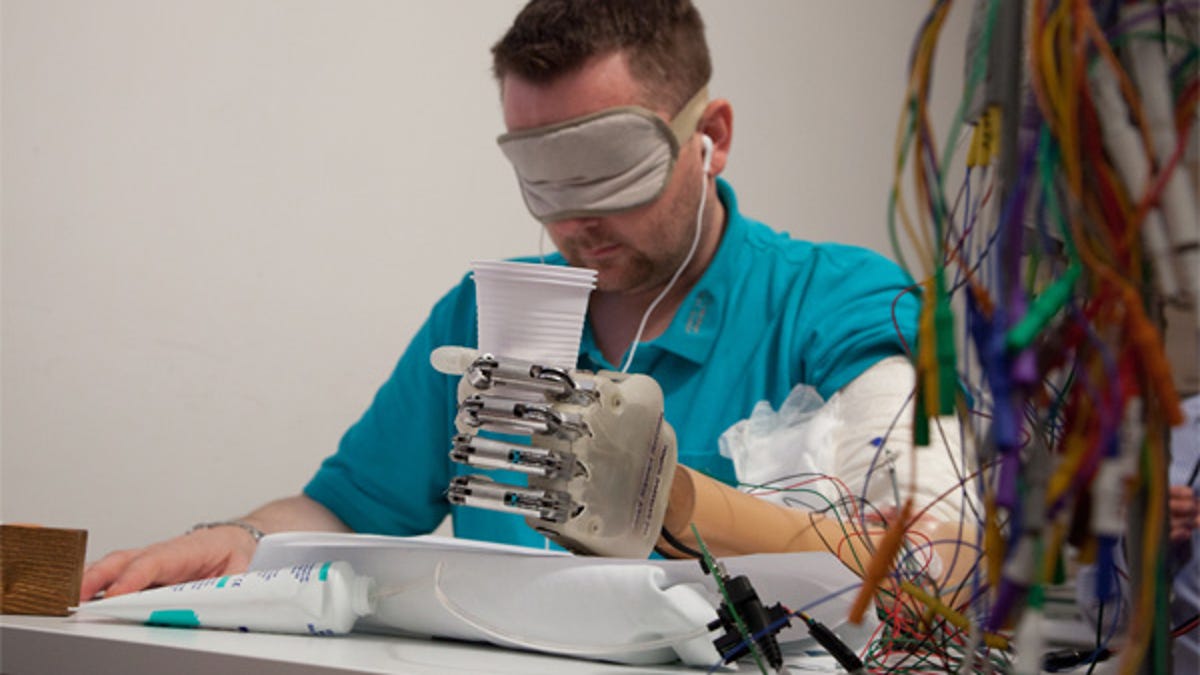Bionic hand lets amputee feel in real-time
Researchers have created a prosthetic hand that allows the user to "feel" via wires to the nerves in the upper arm.

(Credit: Lifehand 2/Patrizia Tocci)
Researchers have created a prosthetic hand that allows the user to "feel" via wires to the nerves in the upper arm.
The problem with robotic hands is that, without nerves, it's impossible to tell how hard you are gripping something. It seems, however, that a solution will soon be available: between research conducted by Cleveland Veterans Affairs Medical Center and Case Western Reserve University last year, and new research that has just been unveiled, it seems amputees might soon be able to "feel" again.
A team of scientists at École polytechnique fédérale de Lausanne (EPFL) in Switzerland and the Sant'Anna School of Advanced Studies (SSSA) in Italy, led by EPFL's Silvestro Micera, have created a robotic prosthetic hand that allows a wearer to feel what they are gripping.
Thirty-six-year-old Dennis Aabo Sørensen of Denmark lost his left hand nine years ago handling fireworks during a family holiday. Dr Silvestri and his team chose Sørensen to test the prototype of their new hand in February 2013 during a clinical trial under the supervision of Dr Paolo Maria Rossini at Gemelli Hospital in Italy.
On 26 January last year, a group of surgeons and neurologists performed surgery on Sørensen, implanting transneural electrodes into the ulnar and median nerves of his left arm. These were then connected to ultra-thin and precise electrodes could relay weak electrical signals directly into the nervous system.
These electrodes were connected at the other end to the prosthetic hand, which sensed when the hand was touching something by measuring tension in the artificial tendons that control finger movement. This information was converted into an electrical current, which was in turn translated using algorithms into an impulse the nervous system was able to interpret.
Sørensen was blindfolded and had his ears plugged before being given a variety of object to hold — and was still able to tell how strong his grip was, as well as the shape and consistency of the different objects.
"The sensory feedback was incredible," he said "I could feel things that I hadn't been able to feel in over nine years. When I held an object, I could feel if it was soft or hard, round or square."
The full study can be found online in the journal Science Translational Medicine. You can view a video of the hand in action here.

